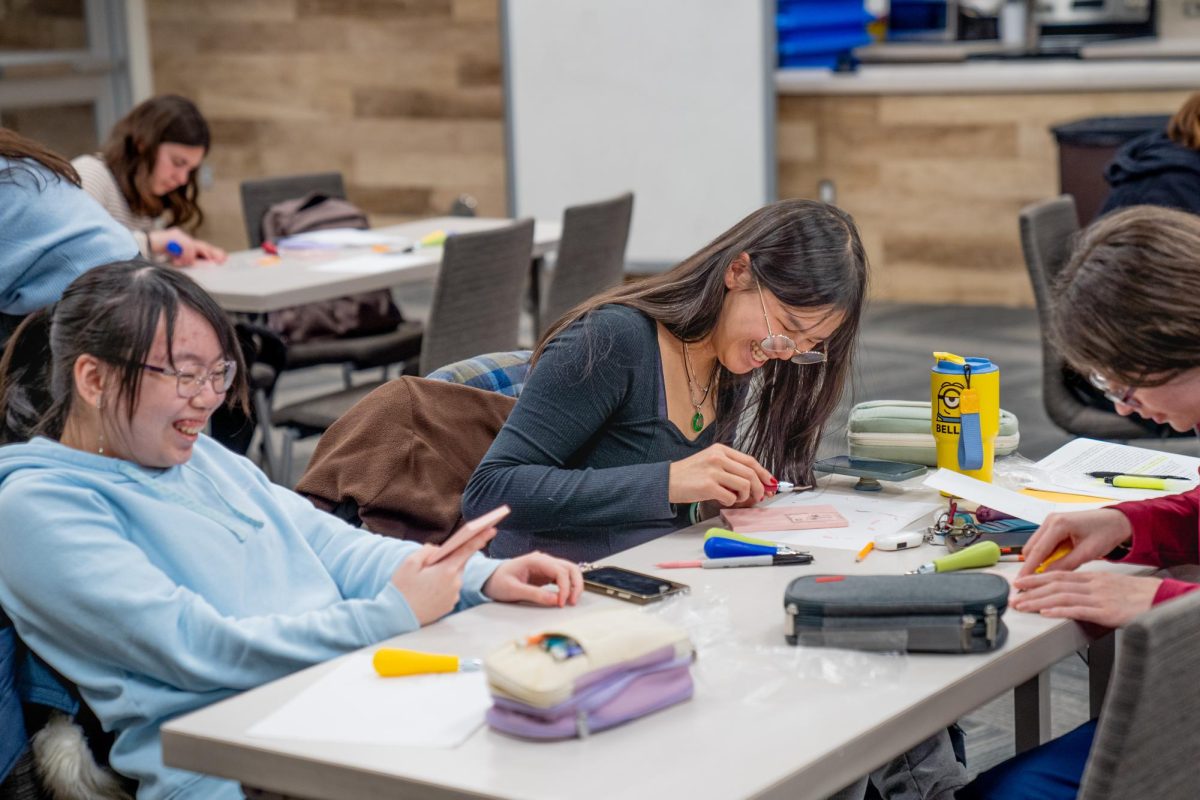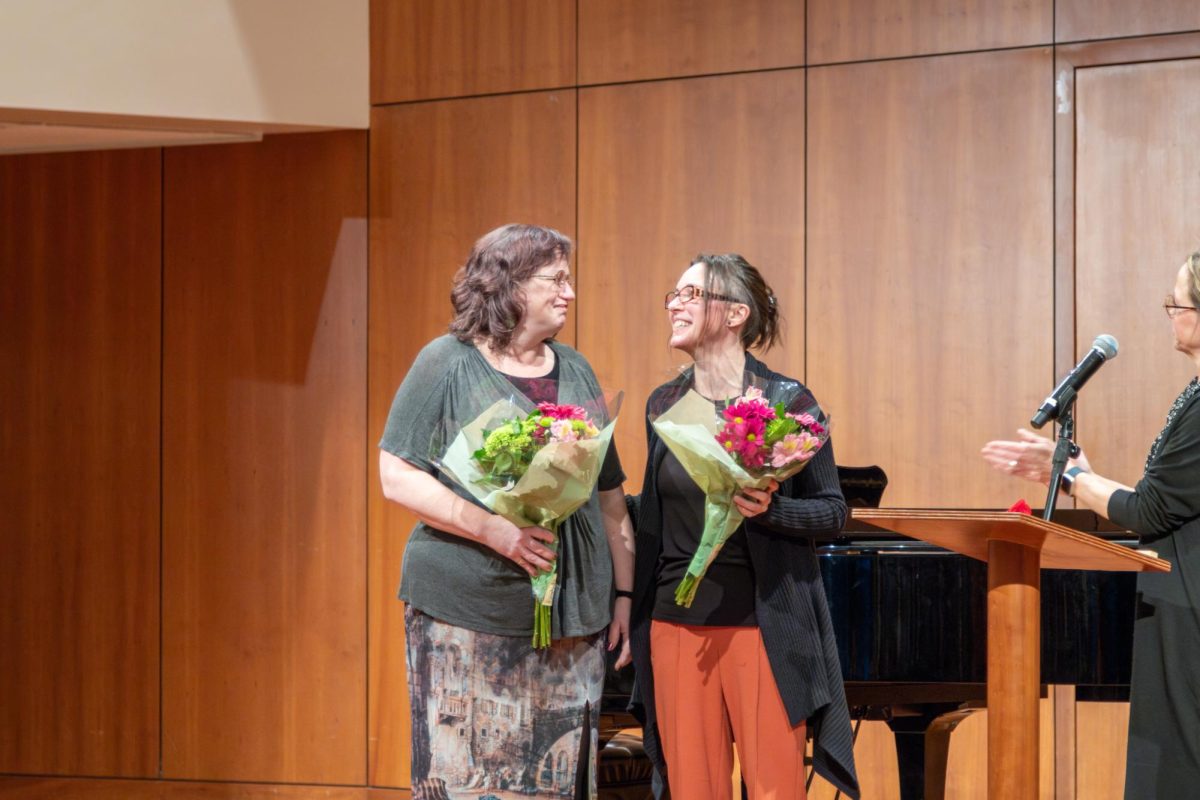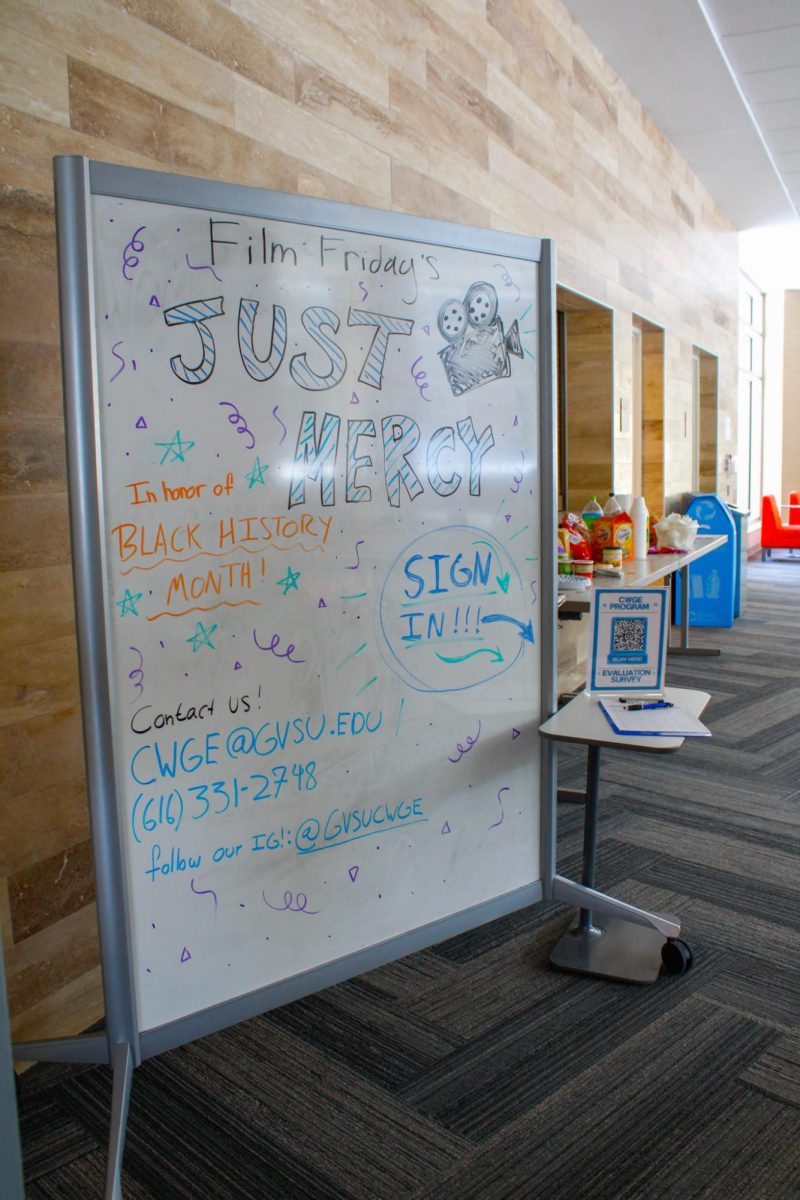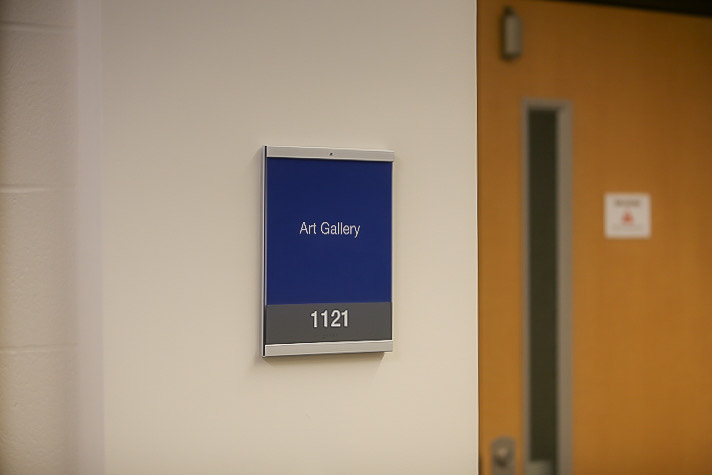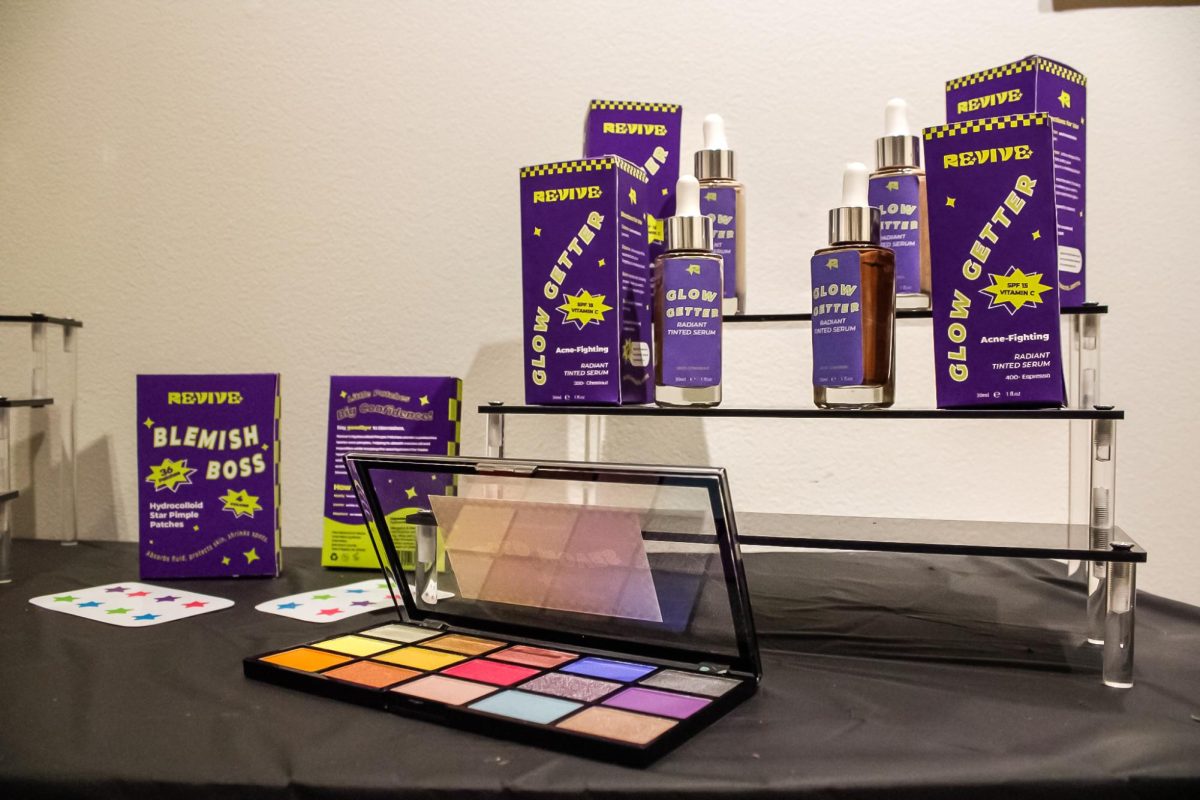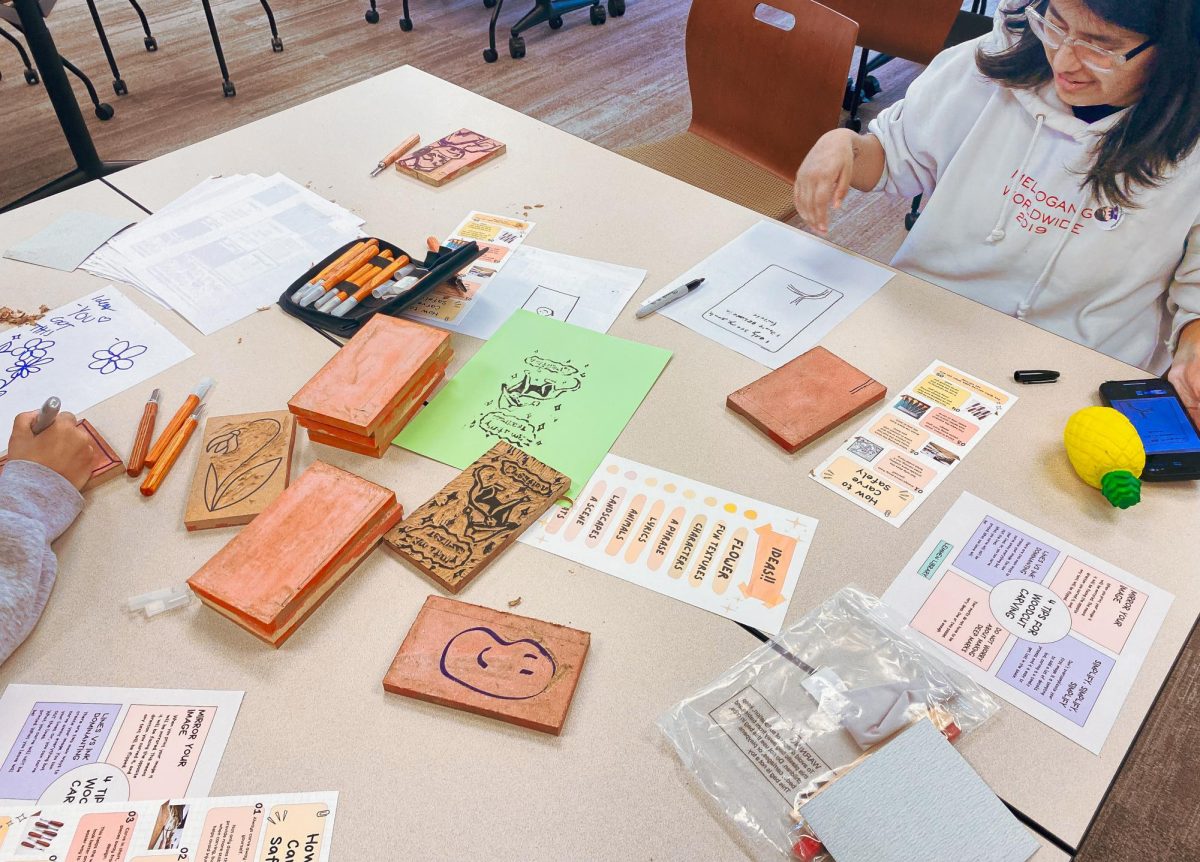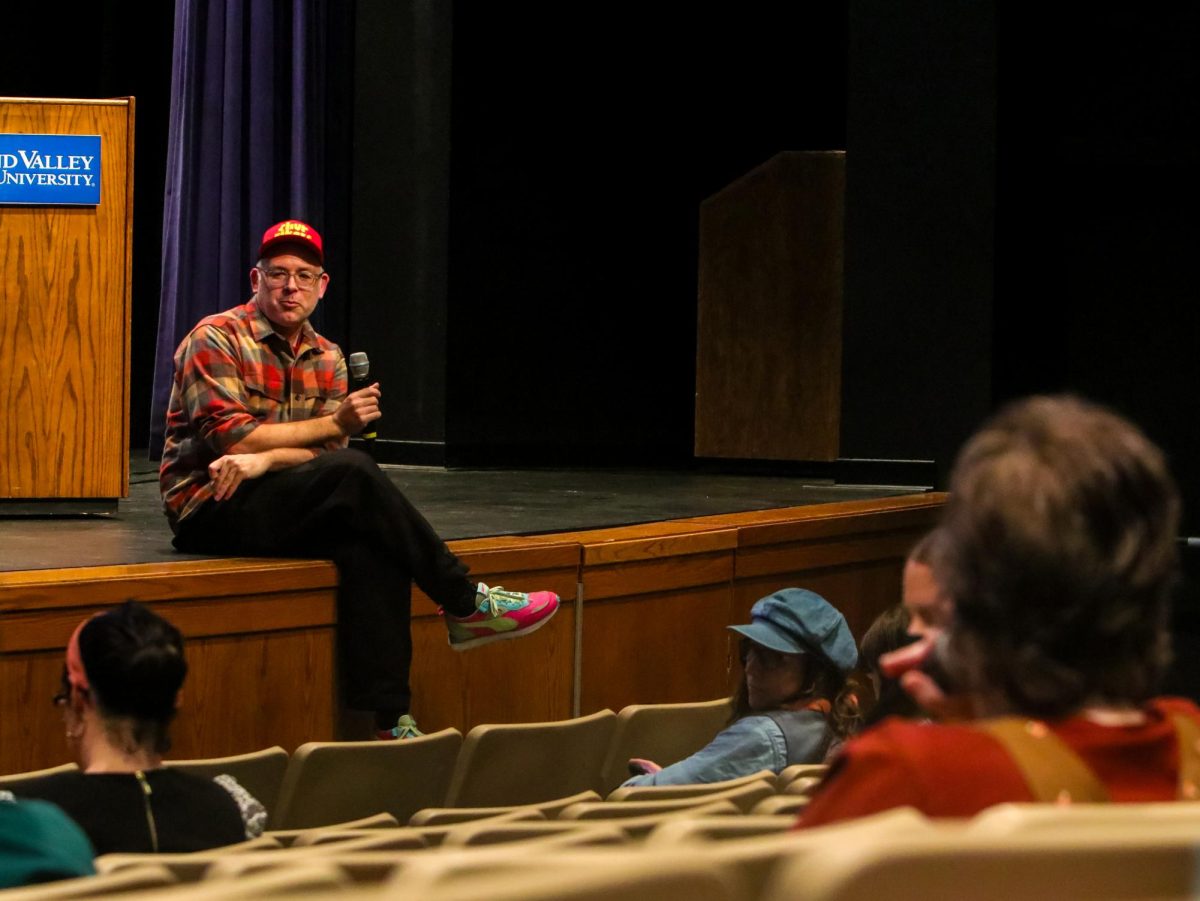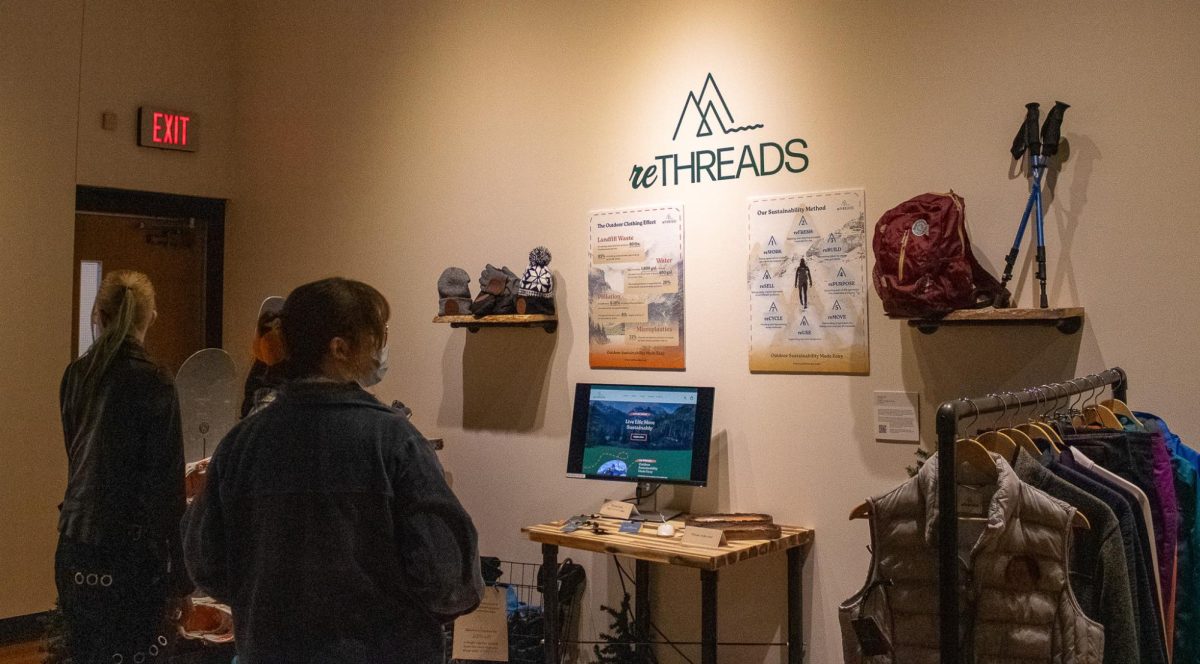On Monday, Feb. 17, the Asian Student Achievement Program (ASAP), which is part of Grand Valley State University’s Office of Multicultural Affairs (OMA), hosted an Asian Block Printing Workshop. The event’s attendees carved designs into rubber blocks, which then became stamps. The workshop allowed students to learn about the history and cultures behind the Asian art medium of block printing.
Block printing began as an art form in ancient China as an efficient way of reproducing and sharing information about medicine and agriculture. Now, the medium is mostly used to create artistic images. Block printing originally began by utilizing wooden blocks, but since rubber is easier to carve into, rubber blocks are commonly used at present.
At the workshop, students drew a design on paper before transferring the graphic onto a rubber block. Once the image was on the block, students began carving out the negative spaces, leaving only the lines. After carving, which was the most tedious part of the process, they applied black ink to their stamps with a small paint roller, and stamped them onto paper. The final stage could be repeated as many times as the artist desired.
ASAP is a branch of one of OMA’s Laker Connections programs. The Connection programs are designed to support and encourage diverse students in an environment where they can be their authentic selves. Laker Connections’ programs are open to all GVSU students.
Anna Miller, OMA’s assistant director, is a firm believer in using art to share culture and history. Miller stated that by learning the practice of printmaking, students can become familiar with new experiences and cultures.
“I had always wanted to pick up printmaking myself,” Miller said. “I spent winter break learning (its) history and techniques so I could share with my ASAP students and interested members of the GVSU community.”
Miller mentioned that block printing historically played a huge role in the spread of information, literacy and art across the world.
“This (art form) also made books and art more affordable to the common people,” Miller added.
While block printing originated in China, Japan and India also have a rich history in the medium. One of the most well-known woodblock prints, “The Great Wave off Kanagawa,” is a Japanese print that exhibits several different carving layers. Miller shared that, among other pieces of art, the work best demonstrates printmaking’s impact on the world and individuals like herself.
“To this day, people still enjoy carving methods of printmaking, and it’s a great way for small artists to replicate their work onto prints or textiles,” Miller said.
GVSU student Malia Tello attended the event and, like many of her peers, experienced printmaking for the first time.
“I knew (block printing) was going to be difficult, and it (proved) me right,” Tello said.
Tello created a stamp of her initials, and despite difficulty, said she enjoys the art form and loved the design she created.
Another student at the University, Tessa Brummels, followed Tello’s suit.
“I did my name, which (had) a lot of details,” Brummels said. “It took me a minute to get it (the carving) going, but it (went) well. I just (took) it slow.”
Brummels offered advice to anyone attempting to block print for the first time.
“When in doubt, start further out, and then you can go back in closer later,” Brummels said. “This (method) prevents cutting away any sections too soon. Once a section of the rubber is gone, that detail is lost.”





